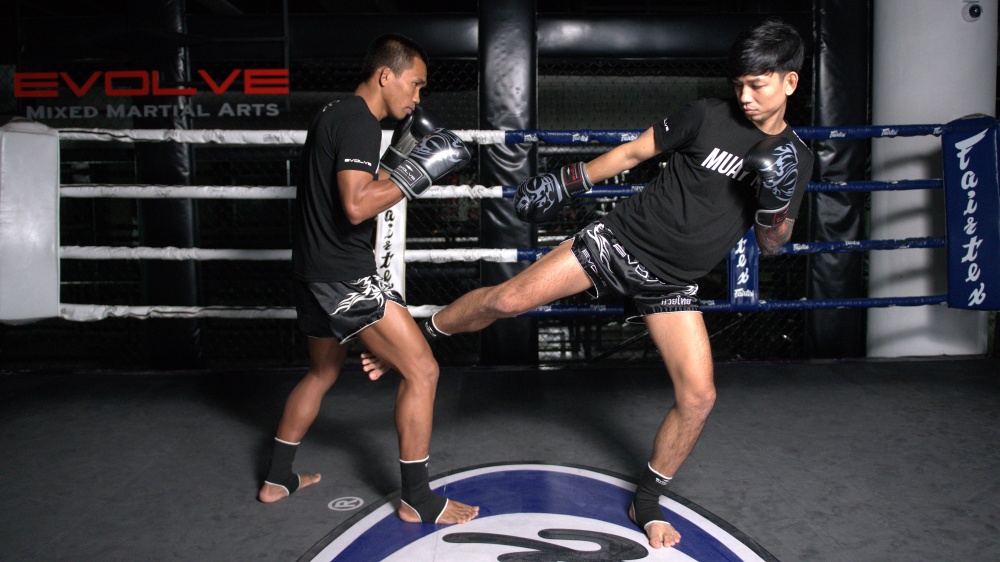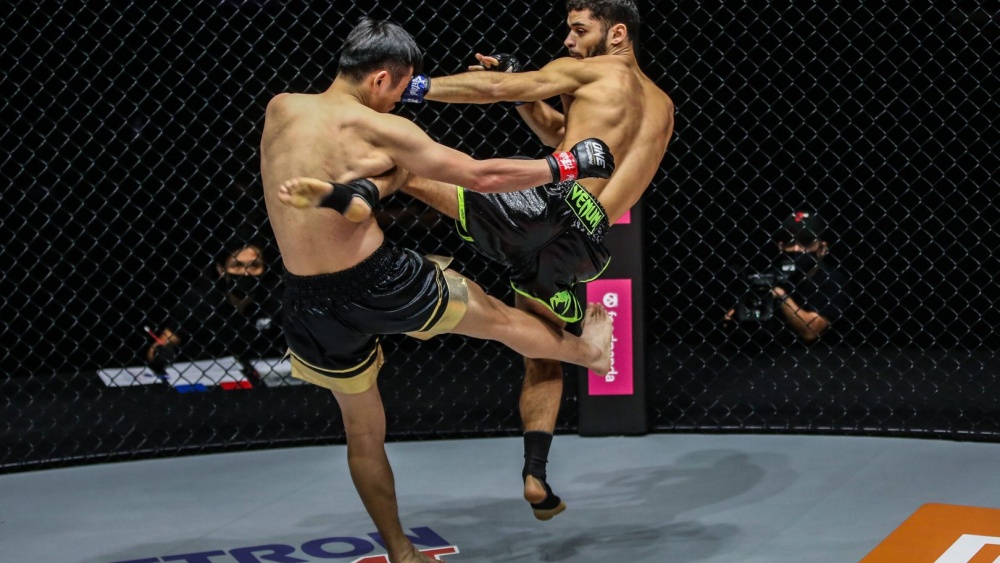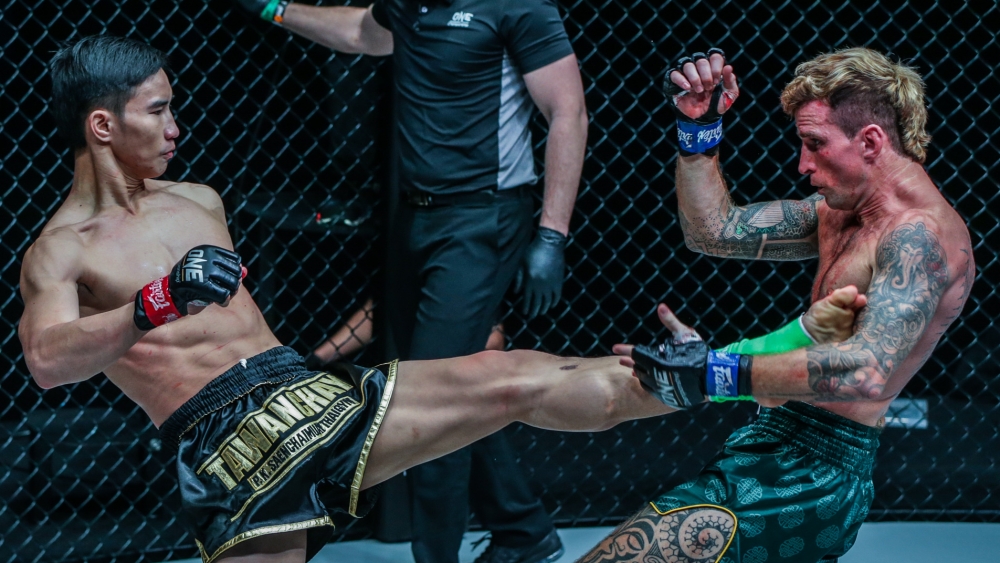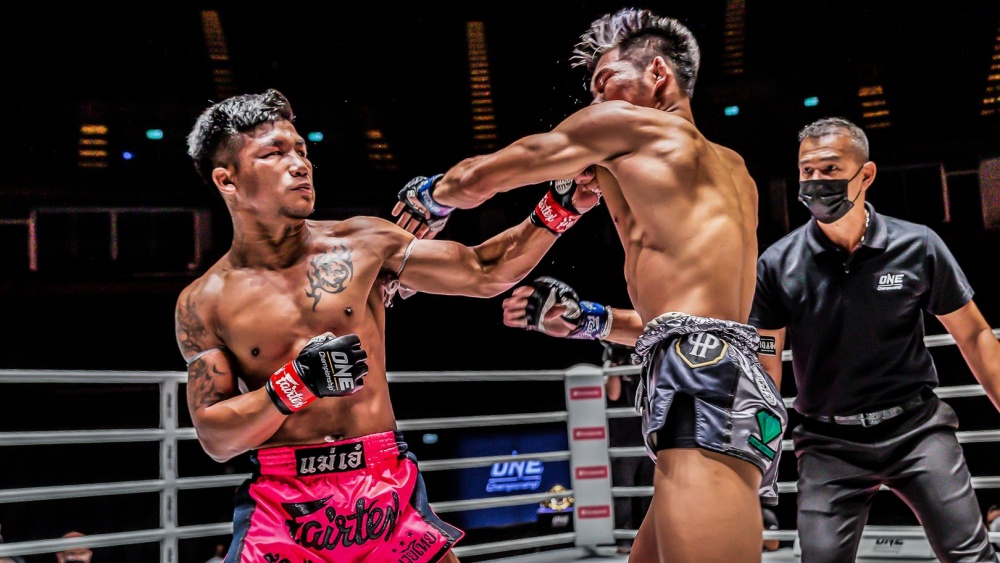One of the most thrilling strikes in Muay Thai is with the elbow. It’s just one weapon in the art of eight limbs, but it is incredibly powerful and exciting to watch when executed well. For this strike to land, a Muay Thai practitioner must be willing to get close enough to their opponent. That, in itself, carries some extra risk to the strike, making it all the more thrilling to watch.
While the elbow is just a single strike within the sport, it comes with many variations. Cutting across, driving up, and driving down are all options for working the elbow. Beyond these variations, there is one variation that seems to rile spectators up more than the others – the spinning back elbow.
The spinning back elbow is a variation of the elbow that involves landing an elbow at the tail end of a spinning motion – be it a full spin or even a partial spin. The elbow is possibly the riskiest elbow to be utilized in Muay Thai, but it, of course, is also highly effective when done well. If you are looking to add this strike to your game, here is how to throw a spinning back elbow for Muay Thai.
The Basics
As with any strike, it is important to have a good base when executing. Without a solid base, you will find yourself at a higher risk of getting swept or hit. With a spinning elbow, this risk is even greater since you are at such close range. Ensuring you have a solid base before starting, during, and after this strike is vital. Here’s what to check for in your base:
- Your feet should start the strike in your typical Muay Thai stance – one foot in front of the other and about shoulder-width apart.
- As you begin the process of turning to throw the elbow, be sure that your feet are never planted right next to each other. Your feet should maintain good spacing as you spin through.
- Stay on your toes to allow you to continue to move, evade strikes coming at you, and be agile on your feet while throwing the elbow.
If you focus on your feet and where (and how) they are planted, you will have a solid base for throwing the spinning back elbow.
Closing The Distance
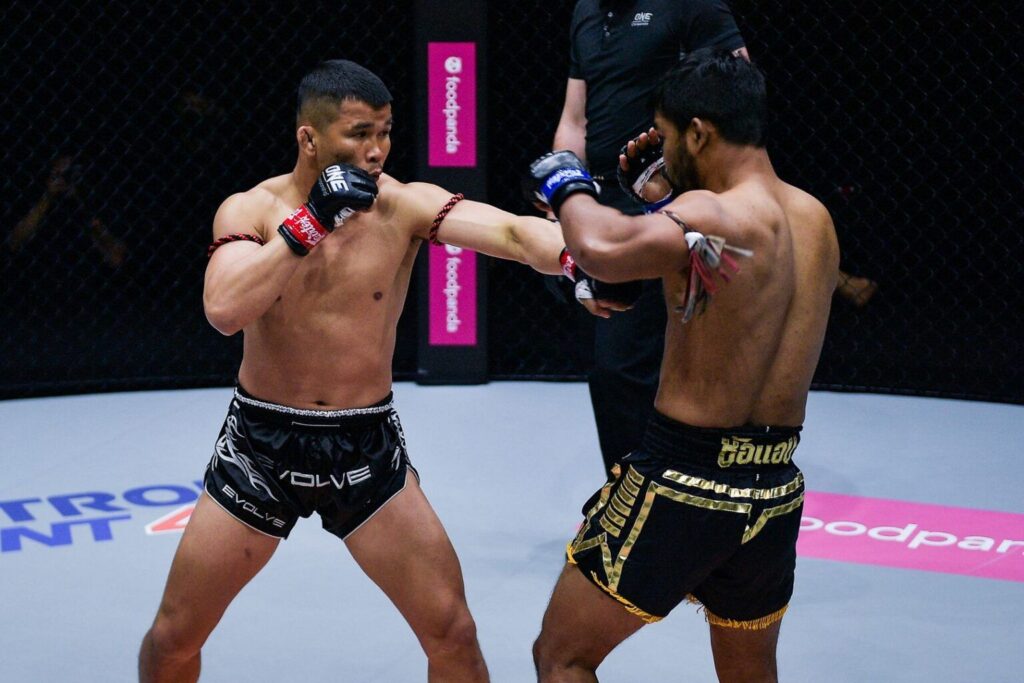
The spinning elbow is similar to all other elbows in that you must be at a close range to utilize the strike. Working your way in towards your opponent before aiming to throw this strike is vital. Here are some ideas for closing the distance to set up the spinning elbow:
- Half step towards your opponent while throwing a couple of jabs.
- Step into a rear knee while reaching towards your opponent’s head to break their posture. This will pull them into your knee and also allow you to close the distance.
- Utilize a leg kick to work toward your opponent. This will help you begin to cut the distance, but it will also help you to cut an angle on your opponent, as well.
If you want to throw a spinning elbow, you need to get close enough to do so. Be sure to try some of these ideas to begin working to a closer range for your setup.
The Side-Step
The step-through is key for throwing the spinning elbow. It allows you to set up the elbow while also moving your body off-line from your opponent. When executing the step-through, you should find that by the time you finish, you end up on the side of your opponent, rather than in front of them. The step-through provides the movement you need to throw the strike and defend yourself in the process. Here’s one way to step through while throwing the spinning elbow:
- While standing facing your opponent (or bag), move your body slightly to the outside of your opponent. You should be facing them, but not directly in front of them.
- Take your lead leg and step it across your body and towards the side of your opponent’s body.
- Begin spinning your body, pulling your rear leg around with you, and landing it in your good base on the side of your opponent. You should now be aligned in your good stance, facing your opponent from the side.
Learning to step through can be a bit tricky. It’s important to not allow your feet to get tangled up during the process. With practice, the step-through will become a natural motion for you to execute.
It’s also important to note that sometimes you do a full step through, and sometimes your feet start the process but don’t pull through. Depending on your opponent’s movements, the elbow may make a full spin or even just a half spin.
The Elbow
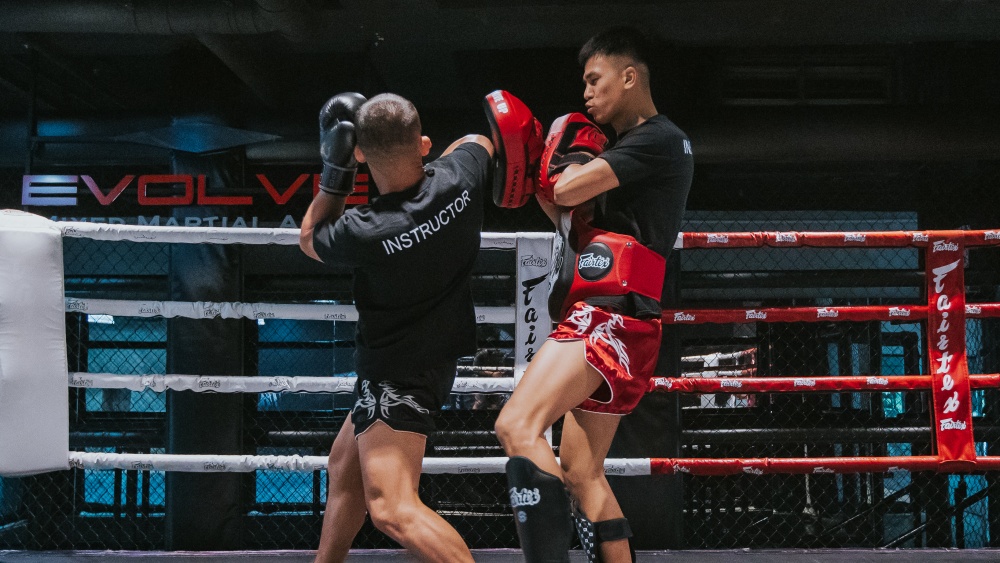
Now that you’ve figured out how to close the distance and step through with your feet (or partially spin), all that is left is adding the elbow. Here’s how to add the elbow to complete your spinning back elbow for Muay Thai.
Option #1 (Full Step Through)
- As your rear leg is stepping through, begin to elevate your rear elbow to a striking position.
- Align your bent arm and elbow towards your opponent (or the bag) as you finish the step through.
- You should end up facing your opponent on the side. Follow up with the clinch, more strikes, or a knee.
Option #2 (Half Step Through):
- After stepping your lead leg across your opponent, keep your rear leg relatively planted.
- Begin to twist your body with your elbow aligned in a more upward motion as you complete the twist without stepping your rear leg through. Align your bent arm and elbow towards your opponent’s face.
- After landing the elbow, untwist your body back to your standing base facing your opponent, but a little off-center.
Utilizing The Spinning Back Elbow
Whether you plan to throw your spinning back elbow utilizing a full revolution of your body, or you plan to slip a strike, spin, and throw it over your shoulder, the spinning back elbow is a powerful strike that you should play with and learn to execute. It is a quick, powerful, and effective strike for every Muay Thai athlete’s toolbox.
You may also like:
Knock Your Opponents Out With These 5 Muay Thai Combinations!
